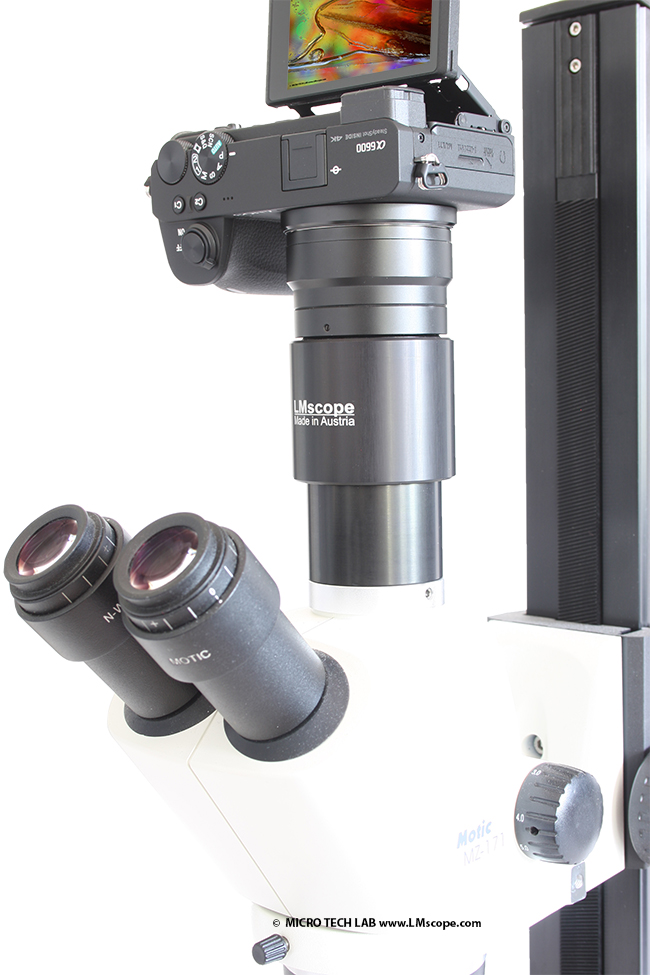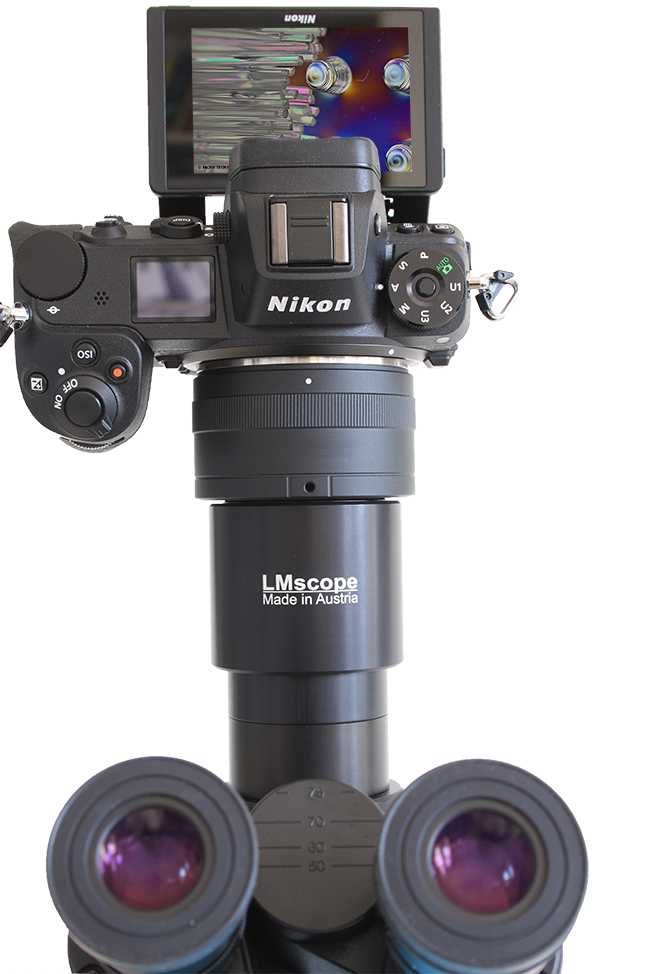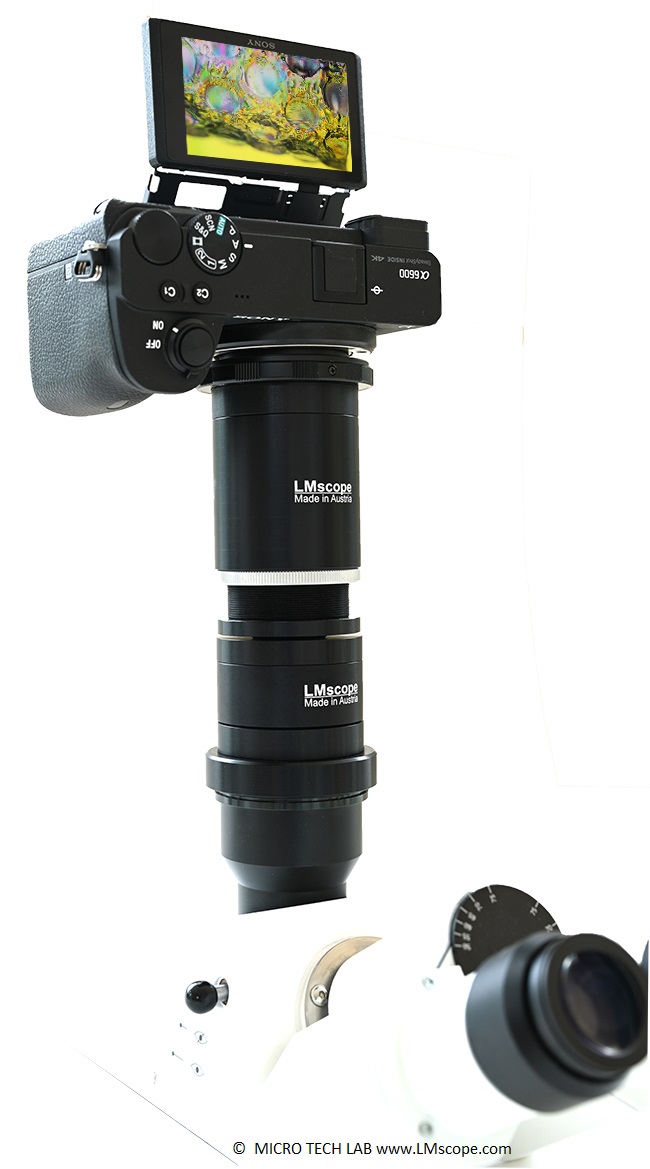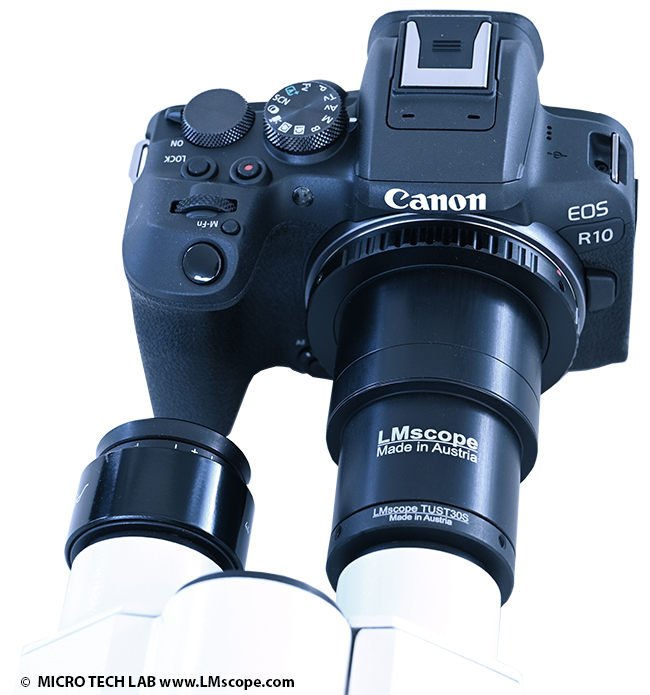

Purchasing a new microscope: I would like to use a modern digital camera on a microscope – what do I need to look out for?


If you’re aiming for a high level of image quality, we recommend using high-quality microscopes, budget permitting. Particularly when taking photos, the differences in quality among microscopes become very obvious.
For this reason, both professional users and ambitious prosumers opt for top-tier infinity-corrected microscopes from brands like Zeiss, Olympus, Leica or Nikon. The type of objective lenses used also has a major impact on image quality, with Plan Apo objectives delivering the best results. If you’re looking to save money, you might consider purchasing a used infinity-corrected microscope. These can be found on the secondary market at sometimes very attractive prices. We offer compatible adapter solutions for attaching various digital cameras to the following older microscopes: If the microscope you’re interested in is not on this list, please contact us for assistance – we will be happy to help.
If you want to achieve superior image quality and plan to regularly use a camera on your microscope, we recommend choosing a microscope with a separate phototube – commonly referred to as a trinocular microscope. This setup consists of a trinocular (trino) head connected to the microscope body. The trinocular head has three tubes: the vertical tube is for installing the camera, and the two forward-facing tubes are equipped with eyepieces for visual observation. The vertical phototube allows the camera to be attached for extended periods without disturbing the normal use of the microscope. The vertical, central placement ensures a stable, secure connection even for heavy camera systems, as our adapters are robustly constructed for durability and strength. The big advantage of the phototube is that the two eyepieces are still available for visual observation.
When attaching digital camera systems to a microscope, it is important that the microscope has a standardised phototube with a specific connection port. Such a connection port is typically included with the microscope or can be purchased as an accessory from a microscope dealer.
For popular brand microscopes from Zeiss, Nikon, Olympus, Leica and Motic, we also offer adapter solutions that can be attached directly to the basic phototube, eliminating the need for a standardised port.

For other brands, we recommend adding the appropriate connection at the time you’re purchasing your new microscope, as there is a risk that you won’t be able to find the right fit in the future.

Standardised phototube connections:
- Phototube with tube sleeve, internal diameter 23.2 mm. This tube connection typically does not contain any optics!
- Phototube with C-mount connection 1x: This connection has a thread (1” x 32G/”) with an external diameter of 25.4 mm. As a rule, a C-mount connection with an optical factor of 1x does not contain any optics.

To attach a digital camera (for example a mirrorless system camera) to a microscope with a standardised connection, we recommend using a microscope adapter with built-in optics for optimising the field of view. This ensures that the camera’s sensor is used to optimal capacity and gives a large, large, high-quality field of view without vignetting.
Shown in the image: example application: Zeiss laboratory microscope with C-mount 1x, LM microscope adapter and Sony A6600 mirrorless system camera

The easiest and most budget-friendly way to attach a digital camera to a microscope is to connect it to the eyepiece tube. To attach the camera, one eyepiece is removed and the camera, together with the adapter unit, is inserted into the tube where the eyepiece was.
With our LM microscope adapters, you can achieve excellent image quality with this method as well.

If you’re looking to purchase a new microscope and add a digital camera to it, please feel free to get in touch. We’re happy to offer expert advice.
New LM Digital Adapter for: Sony Alpha 9 III / Nikon Z9 / Nikon Z8 / Sony Alpha 7R V / Sony Alpha 1 II / Sony Alpha 1 / Sony Alpha 9 II (ILCE-9M2) / Sony FX3 Cinema Line / Sony Alpha 9 / Nikon D6 / Canon EOS R3 / Canon EOS R6 Mark II / Canon EOS R8 / Sony Alpha 7R IV / Canon EOS R5 II / Nikon Z6III / Canon EOS R5 / Sony Alpha 7S II / Sony Alpha 7S III / Sony Alpha 7R III / Canon EOS R6 / Nikon Z6 / Nikon Z6II / Sony Alpha 7R II / Nikon Z7 / Nikon Z7II / Canon EOS R / Canon EOS Ra (Astro) / Nikon Z5 / Sony Alpha 7C / Canon EOS RP / Sony Alpha 7S / Canon EOS R7 / Leica SL2-S / Canon EOS R10 / Nikon Z50 II / Canon EOS 1D X Mark III / Nikon Z50 / Nikon Z30 / Nikon Z fc / Nikon D850 / Canon EOS 1D X Mark II / Nikon D780 / Olympus OM-1 / Sony Alpha 7III / Olympus OM-D E-M1 Mark III / Canon EOS R100 / Sony Alpha 6700 / Nikon D5 / Sony Alpha 6600 / Fujifilm X-H2S / Fujifilm X-S10 / Fujifilm X-E4 / Fujifilm X-Pro3 / Olympus OM-D E-M1X / Sony Alpha 6400 / Sony Alpha 6100 / Sony ZV-E10 / Canon EOS 1D X / Nikon D4s / Olympus OM-D E-M5 III / Canon EOS 90D / Canon EOS 5D Mark IV / Nikon D4 / Nikon D750 / Canon EOS 6D Mark II / Fujifilm X-T5 / Fujifilm X-T4 / Fujifilm X-T3 / Sony Alpha 6300 / Sony Alpha 6500 / Nikon D500 / Nikon D810 / Nikon D800 / Canon EOS M6 Mark II / Nikon D800E / Nikon Df / Panasonic Lumix DC-G9 / Nikon D610 / Nikon D600 / Canon EOS 250D / Canon EOS 850D / Rebel T8i / Canon EOS 6D / Sony Alpha 99 II (SLT-A99 II) / Canon EOS M200 / Canon EOS 5DS R ( without low-pass filter) / Olympus OM-D E-M1 Mark II / Canon EOS 80D / Canon EOS M50 Mark II / Canon EOS 5DS / Canon EOS M50 / Sony Alpha 77 II / Canon EOS 70D / Nikon D7200 / Pentax K-1 Mark II / Canon EOS 200D / Canon EOS 800D / Rebel T7i / Canon EOS 77D / Canon EOS 5D Mark III / Canon EOS 60D / Sony Alpha 7R /